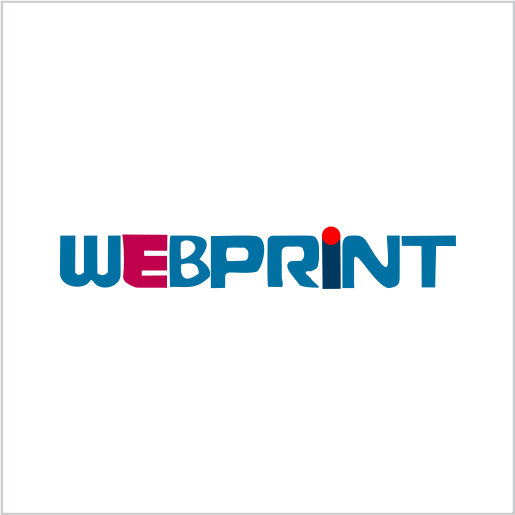What Is Queue Management Software?
Queue management software is a highly efficient and effective tool that organizations can use to streamline daily operations and improve customer satisfaction. This program automates several operations to simplify the process of managing queues, often known as waiting lines, resulting in shorter wait times and better overall service delivery. At its foundation, queue management software is intended to help organizations organize and manage client flow effectively.
It works by allowing clients to join a virtual queue and notifying them when it is their turn to be served. This eliminates the need for physical queues, creating a more efficient and simplified operation. One of the most important advantages of queue management software is the capacity to gather and analyze real-time data. This data enables firms to discover bottlenecks and continuously improve their processes, resulting in shorter wait times and more effective customer service.
Furthermore, this software can improve the client experience by displaying estimated wait times and allowing them to check their place in the queue from their own device, reducing frustration and increasing satisfaction. Many software alternatives provide additional functionality beyond queue management, such as appointment scheduling, online queuing, and self-service kiosks.
This enables firms to customize the software based on their individual requirements and industry. Queue management software can help a variety of businesses, including healthcare, retail, banking, and government institutions. In healthcare environments, this software can assist minimize patient wait times and increase clinic and hospital efficiency. In retail, it can shorten checkout lines and improve the whole buying experience.
In the banking industry, it can help to streamline customer service operations and shorten wait times. When selecting queue management software, there are several important variables to consider. These include the capabilities available, interoperability with existing systems, scalability, and usability. It is also critical to choose a software provider with a proven track record of dependability and exceptional customer service.
What Are The Recent Trends In Queue Management Software?
The world of customer service and waiting in line has changed dramatically in recent years, increasing the requirement for efficient queue management software. This technology has evolved to meet the increasing expectations and demands of both consumers and enterprises.
Let's look at the latest developments in queue management software to help you make an informed decision.
1. Integration With Multiple Platforms: One of the most recent developments in queue management software is cross-platform integration. Customers can join a virtual line from anywhere, including a website, mobile app, or self-service kiosk. Businesses may also track and manage queues in real time using a variety of devices, making the process more convenient for both parties.
2. Personalization For Customers: Personalization has become an important component of customer service, and queue management software is no exception. Businesses may now personalize their customers' waiting experiences using powerful data analytics and artificial intelligence (AI). This involves providing tailored messages, predicted wait times, and targeted discounts depending on the customer's preferences and previous purchases.
3. Digital Signage: With the advancement of digital signage technology, many organizations have begun to include it into their queue management systems. This improves contact with customers by presenting real-time wait information, specials, and other relevant communications. Some systems also include interactive digital signage that allows customers to engage with the display while receiving individualized information.
4. Mobile Queue Management: In today's fast-paced world, many customers consider waiting in line a waste of time. To address this, a trend of mobile queue management has evolved. Customers can join a virtual queue using their smartphone and receive updates on their wait time, position in the queue, and even check-in when they arrive at the location. Customers save time and irritation, and businesses benefit from a more efficient queue management procedure.
5. Data-Driven Insights: Queue management software does more than just manage and organize lines; it also collects vital data that can help businesses make better decisions. The most recent trend in this technology is the use of data-driven insights to optimize queue management processes. This includes assessing peak wait times, customer flow, and employee efficiency in order to make changes and improve the overall customer experience.
Benefits Of Using Queue Management Software
Queue management software has various advantages for enterprises that deal with large numbers of consumers, including retail outlets, banks, healthcare facilities, and government agencies. This powerful technology optimizes the waiting process and increases customer satisfaction by efficiently managing queues and shortening wait times.
Here are the main advantages of adopting queue management software:
1. Improved Customer Experience: Queue management software enables businesses to create a consistent and structured waiting experience for their consumers. Customers may easily track and plan for their wait times thanks to features such as virtual queuing, appointment scheduling, and real-time updates. This lessens the aggravation of waiting in long lines and increases overall pleasure.
2. Increased Operational Efficiency: By automating the queue management process, firms may streamline their operations and increase efficiency. The software assigns and distributes tickets to various service locations, reducing idle time while increasing staff usage. This leads to speedier service delivery and shorter customer wait times.
3. Advanced Analytics: Most queue management software has robust reporting and analytics capabilities. This allows organizations to monitor and analyze data on consumer flow, wait times, and employee performance. Businesses may improve their operations and customer experience by detecting patterns and trends in data.
4. Customization And Personalization: Queue management software can be tailored to meet the specific needs of a firm. It may be customized with personalized messages and branding, resulting in a unique and engaging waiting experience for clients. This not only improves the brand's image, but also boosts client loyalty.
5. Integration With Other Business Systems: Queue management software is easily integrated with other business systems, such as customer relationship management (CRM) and point-of-sale (POS). This gives businesses a 360-degree perspective of their clients, allowing them to provide more personalized and efficient services.
6. Cost Savings: Queue management software can help organizations save money by lowering wait times, streamlining operations, and enhancing employee productivity. It also eliminates the need for manual ticketing systems, which reduces paper waste and lowers operating expenses.
Important Factors To Consider While Purchasing Queue Management Software?
When seeking to buy queue management software, there are various variables to consider to guarantee you get the best solution for your company.
Here are the essential points to consider before making your decision:
1. Scalability: One of the most crucial factors to evaluate is the software's capacity to scale. You want to invest in a system that will scale with your company and handle an increasing number of clients and lines.
2. Integration: Choose queue management software that is compatible with your current systems and hardware. This will save time and money during the implementation process while ensuring a smooth transition.
3. Customization: Because each organization has unique requirements, it is critical to select software that can be tailored to your individual demands. This allows you to modify the software to your own procedures and workflows.
4. Usability: Both your customers and workers should find the product easy to use. Complicated systems can impede operations and confuse both parties.
5. Reporting And Analytics: Select a solution that provides thorough reporting and analytics capabilities. This will provide useful insights into customer trends, line lengths, and wait times, allowing you to make data-driven decisions to optimize your procedures.
6. Mobile Access: With the advent of mobile technology, it is advisable to select queue management software that includes a mobile app or can be used via a web browser. This enables your customers to join queues remotely, lowering wait times and increasing overall customer satisfaction.
7. Customer Support: Consider the software provider's level of customer support. Look for a company that provides 24-hour support and a specialized team to help with any concerns or questions that may occur.
By taking these aspects into account, you can select the best queue management software for your business needs, allowing you to optimize processes, improve customer experience, and ultimately boost income.
What Are The Key Features To Look For In Queue Management Software?
Queue management software is a crucial tool for any company wanting to optimize and improve its customer service process. It enables organizations to properly manage customer queues, cut wait times, and enhance overall customer satisfaction.
When contemplating purchasing queue management software, there are a few crucial things to look for to guarantee you get the most bang for your buck.
1. User-Friendly Interface: The software should have a straightforward and intuitive interface that is simple to use for both customers and staff. A cluttered and convoluted interface can cause confusion and delays, negating the point of utilizing the software in the first place.
2. Customization Possibilities: Each organization has distinct demands and requirements, and queue management software should provide customization choices to meet those needs. Look for tools that let you establish and alter queue kinds, appointment calendars, and service categories to meet your company's specific requirements.
3. Real-Time Monitoring: One of the most important aspects of queue management software is the ability to track client flow and wait times in real time. It enables businesses to discover areas for development and make the required changes to cut wait times and create a better customer experience.
4. Multi-Channel Support: With so many communication channels accessible today, it's critical to select queue management software that supports them all, including internet, mobile, kiosks, and more. This feature allows customers to join the line through their preferred channel, increasing convenience and decreasing wait times.
5. Reporting And Analytics: Comprehensive reports and analytics can provide significant information about customer behavior, employee performance, and operational efficiency. Seek out software that provides real-time data and reporting capabilities for tracking critical metrics like average wait time, service times, and customer satisfaction.
6. Integration With Existing Systems: To avoid disruptions and streamline the implementation process, select queue management software that seamlessly integrates with your existing systems, such as customer relationship management (CRM) software, appointment scheduling, and billing systems.
7. Mobile Accessibility: In today's fast-paced environment, clients want quick access to services via mobile devices. Queue management software that includes a mobile app or is mobile responsive allows consumers to join queues, receive updates, and check their position in line using their mobile devices, boosting their experience.
8. Virtual Queuing: With the advent of virtual services, particularly during the current worldwide pandemic, virtual queuing enables clients to join the wait remotely via a web-based app or phone call without physically being present at the service location.
Why Do Businesses Need Queue Management Software?
Queue management software is an essential tool for companies of all kinds, from small retail outlets to major organizations. This robust software enables organizations to efficiently manage lineups and simplify customer flow, resulting in higher customer satisfaction and income.
Let's explore, we will look at the top reasons why organizations require queue management software and how it may help their operations.
1. Reduce Wait Time And Enhance Customer Experience: One of the primary reasons for organizations to use queue management software is to reduce client wait times. Businesses that effectively manage lineups can ensure that customers are serviced on time and efficiently. This not only enhances the client experience, but also alleviates the aggravation and stress that comes with excessive wait periods. As a result, clients are more inclined to return and refer the firm to others.
2. Optimize Staff Allocation To Increase Productivity: Queue management software enables organizations to watch and monitor client flows in real time. This allows companies to optimize staffing and ensure that the appropriate number of people are available to assist clients based on current demand. Businesses that streamline this process can boost productivity and lower labor expenses, resulting in larger profits.
3. Increase Overall Efficiency And Reduce Errors: Manual queue management is prone to human mistake, causing delays and confusion for both consumers and employees. Queue management software lowers the danger of errors by automating the process, ensuring that clients are served in the correct sequence, and lowering the possibility of mistakes. This not only increases efficiency, but also reduces customer discontent and bad feedback.
4. Collect Valuable Data And Insights: Queue management software offers organizations vital data and insights into consumer flow, wait times, and service effectiveness. This information can be utilized to make data-driven decisions, optimise operations, and pinpoint areas for improvement. Businesses that analyze this data can gain a deeper understanding of their consumers' wants and behaviors, resulting in a more personalized and enhanced customer experience.
5. Ensure Compliance With The Safety And Security Guidelines: In the aftermath of the COVID-19 outbreak, enterprises must follow safety and security rules, including social distancing procedures. Queue management software can help by limiting the amount of clients on the premises, assigning specific waiting spaces, and providing mobile alerts to consumers when it is their turn to be serviced. This not only assures compliance, but also creates a safe and secure environment for both consumers and employees.
How Much Time Is Required To Implement Queue Management Software?
The time necessary to establish queue management software will vary based on the software supplier and the complexity of your business requirements. However, on average, the implementation phase can last from a few weeks to several months. The first step in deploying queue management software is to undertake a thorough evaluation of your present queue system to identify any problems and opportunities for improvement.
This could include investigating wait times, user experience, and general efficiency. Next, the software vendor will often collaborate with you to tailor the program to your specific company requirements. This could entail creating queues, defining service categories, and connecting the program with your current systems. Once the software is configured, it must be tested and any necessary changes made.
This stage may take a few weeks to guarantee that the software works properly and meets your company objectives. The third stage is to teach your employees how to utilize the software efficiently. This usually includes both technical and user experience training to facilitate a smooth transition to the new system. Overall, implementing queue management software may take some time, but the benefits of increased efficiency and customer service make it well worth the effort.
It is critical to collaborate closely with your software vendor throughout the deployment process to achieve a successful and smooth integration into your business operations.
What Is The Level Of Customization Available In Queue Management Software?
Queue management software provides a variety of customisable solutions to meet the specific demands and requirements of each business. The extent of customization offered varies based on the product and supplier, but in general, most queue management software provides a few essential modification options.
One of the main customization options is the ability to alter the software's interface and style to meet your branding and aesthetic preferences. This includes the ability to modify colors, add logos and phrases, and select layouts that are consistent with your brand identity. Another significant component of customisation is the ability to tailor the software's workflow and functionality to your own business procedures.
This can include constructing separate queues for different service areas, developing bespoke categories and services, and establishing criteria for routing and prioritizing clients. Furthermore, most queue management software enables for reporting and analytics customization, giving businesses control over which metrics and data to measure and show.
This allows firms to focus on the key performance indicators (KPIs) that are most important to their operations and make data-driven decisions appropriately. Furthermore, some queue management software supports integration with other systems and platforms, allowing organizations to optimize their procedures and data management. This level of flexibility is especially advantageous for firms that already use customer relationship management (CRM) or ticketing systems.
Which Industries Can Benefit The Most From Queue Management Software?
Queue management software is a versatile solution that may help a variety of companies improve their customer service procedures.
Retail and healthcare, as well as transportation and government institutions, can all benefit from queue management software to improve operations and increase customer happiness.
1. Retail: Queue management software can help businesses manage client flow, reduce wait times, and improve the entire shopping experience. Retailers may successfully manage foot traffic and maintain a smooth and organized checkout experience by using features such as virtual queueing, appointment scheduling, and real-time analytics.
2. Healthcare: In the fast-paced field of healthcare, queue management software can make a significant difference. By automating patient registration, appointment scheduling, and queue management, healthcare providers can improve patient flow, minimize wait times, and enhance overall patient experience. As a result, clinics and hospitals may see greater patient satisfaction, retention, and efficiency.
3. Transportation: Airports, rail stations, and bus terminals can all benefit from queue management software. Transportation hubs can manage large numbers of passengers, minimize wait times, and improve the overall customer experience by employing advanced queuing strategies such as virtual queuing and crowd control. This can also result in greater consumer loyalty and favorable word-of-mouth referrals.
4. Government Agencies: For government agencies that handle a large number of visitors, queue management software can be an effective tool for optimizing customer service procedures. Government organizations can minimize wait times, boost efficiency, and give citizens with a more convenient experience by implementing features such as self-service kiosks, appointment scheduling, and mobile queue management.
5. Education: Queue management software can assist schools and colleges manage student services more efficiently, such as registration, admission, and counseling. Automating these processes allows academic institutions to cut wait times, increase staff efficiency, and improve the overall student experience.
Overall, queue management software is a useful option for any company that has heavy foot traffic and customer interactions. Businesses that embrace this technology can streamline their operations, increase customer happiness, and ultimately drive development and profitability. So, whether you work in retail, healthcare, transportation, government, or education, queue management software is a good investment that can significantly benefit your company.
Conclusion
Finally, investing in quality queue management software can help your organization by optimizing customer service operations and increasing overall efficiency. This software, with its powerful features such as real-time monitoring, extensive analytics, and customized choices, can help you cut wait times, increase customer happiness, and, ultimately, boost your profits.
When looking for the best queue management software for your company, it's critical to evaluate your specific requirements and budget. Key aspects to look for include integration, mobile access, and scalability. Don't forget to find a respectable and trustworthy provider with a track record of providing excellent customer service.
By thoroughly researching and comparing your options, you can make an informed decision and select the best queue management software to meet your specific business needs. Remember that the correct software can significantly improve the success of your customer service operations. So, take the time to carefully consider your options and invest in a solution that will provide value to your organization for years to come.






















